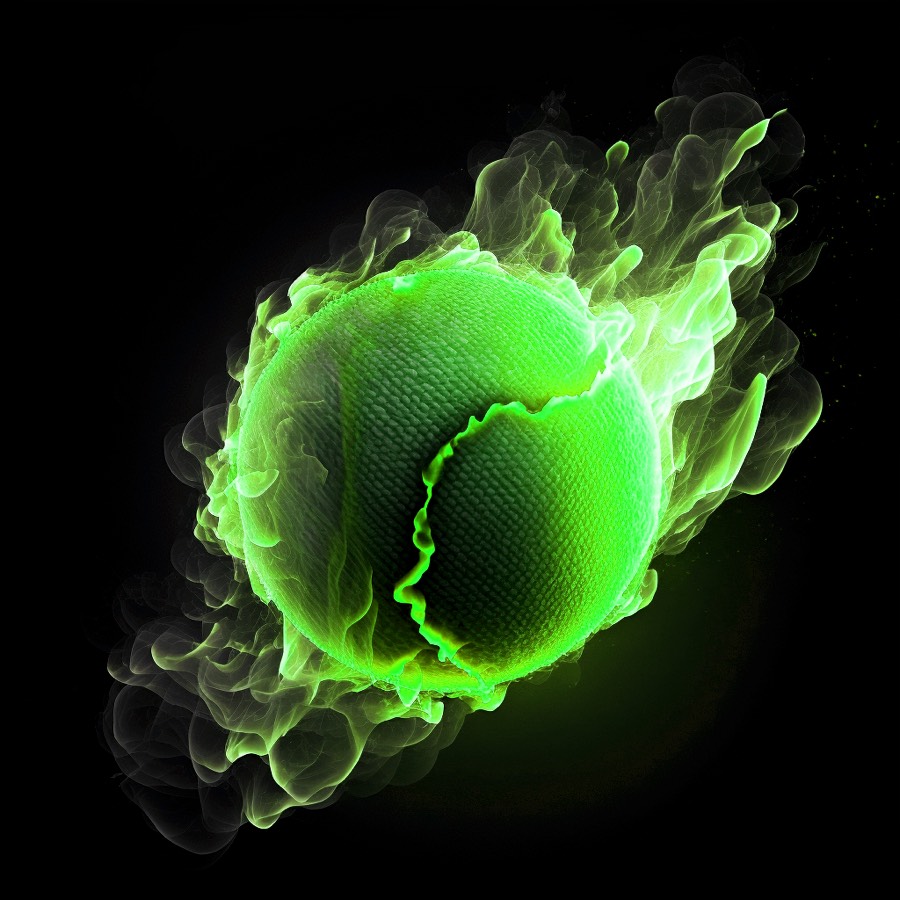
The Effects of Overinflated Tennis Balls
Overinflated tennis balls are a common problem in professional tennis matches, and they can have a detrimental impact on players’ performance.
Overinflated balls tend to bounce higher and travel faster, making it more challenging for players to control their shots. This can result in a higher number of unforced errors and missed opportunities to score. Overinflated balls can also put players at greater risk of injury, as they tend to be harder and less forgiving on impact.
The Effects of Underinflated Tennis Balls
On the other end of the spectrum, underinflated tennis balls can also negatively impact players’ performance. Underinflated balls tend to bounce lower and travel slower, which can make it more challenging for players to generate power on their shots. This can result in weaker shots that are easier for opponents to return. Additionally, underinflated balls can put more strain on players’ arms, as they require more effort to hit and can cause discomfort and fatigue over the course of a match.
Professional tennis matches require a precise balance of skill, strategy, and equipment.
One critical element of equipment that can affect the outcome of a match is the pressure of the tennis ball.
In this section, we will explore the ideal tennis ball pressure for professional matches and the regulations set by the ATP and WTA. Additionally, we will discuss the factors that can affect tennis ball pressure during play.
Testing Tennis Ball Pressure Testing the pressure of tennis balls is crucial to ensuring fair play in professional matches. In this section, we will cover the different methods for testing tennis ball pressure, including the use of the finger press, and bounce test. We will explain the equipment needed and the steps involved in each method, as well as the benefits and drawbacks of each method.
- Finger Press Method: The finger press method involves using your fingers to press down on the tennis ball to determine its pressure. This method is quick and easy, but it is not as accurate as the pressure gauge method. To use this method, you simply press down on the ball with your fingers and feel for the level of pressure. The benefits of this method include its ease of use and portability. However, it is not as accurate as the pressure gauge method.
- Bounce Test Method: The bounce test method involves dropping a tennis ball from a certain height and observing the height of the bounce to determine its pressure. This method is also quick and easy, but it is not as accurate as the pressure gauge method. To use this method, you simply drop the ball from a specific height and observe the height of the bounce. The benefits of this method include its ease of use and portability. However, it is not as accurate as the pressure gauge method and can be affected by other factors, such as temperature and humidity.
Maintaining the correct pressure of tennis balls is crucial for fair play and player safety in professional tennis matches. The ATP and WTA have set regulations on tennis ball pressure to ensure consistency and fairness across all matches. It is essential for players and officials to pay attention to tennis ball pressure and test it regularly to ensure a fair and safe game. By doing so, players can achieve their optimal performance, and the outcome of the match can be decided solely by skill and strategy.
